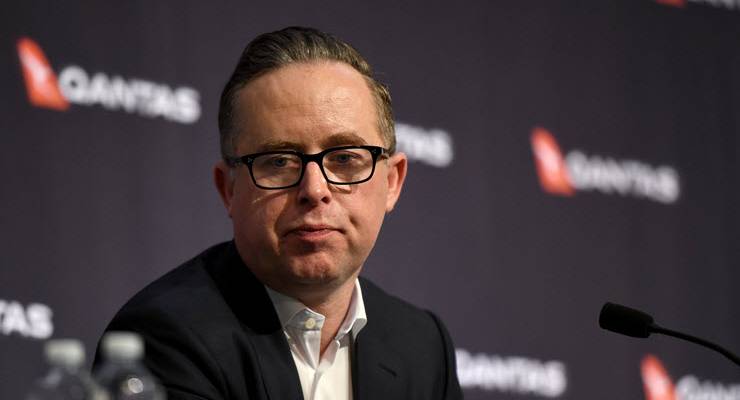
We’re yet to see the work of the federal auditor-general on JobKeeper, but Grant Hehir’s office would be well advised to have a close read of the excellent 17-page analysis released yesterday by proxy advisory firm Ownership Matters investigating the huge JobKeeper payments accessed by ASX300 companies in calendar 2020.
The mainstream media is full of coverage today on the report, spanning The Australian’s John Durie, The Age, The AFR, the ABC and Guardian Australia.
It’s hard to know where to start given the scale of the largesse. Suffice to say there were not many examples cited of listed companies which lost money in 2020 but were kept afloat by JobKeeper.
In aggregate, 75 of the ASX300 companies helped themselves to a total of $2.45 billion in Jobkeeper subsidies in calendar 2020; 66 were still on the teat for the December half year when most lockdowns, excluding Victoria, were done and dusted.
So if these were the 66 most needy outfits in the ASX300, how is that 58 of them managed to report a profit in the December half year, and 34 of the 66 actually lifted profits, as measured by using their own preferred reporting metrics?
Courtesy of extremely flimsy qualification requirements, it looks like Australia produced one of the world’s most generous wage subsidy schemes with close to the weakest transparency accompanying it.
If New Zealand, the UK and the US can produce public registers of recipients, why not Australia?
For that we turn to newly elected OECD boss Mathias Cormann who belled the cat on the government’s excessive JobKeeper secrecy when he appeared before the Senate select committee on COVID on June 9. He was asked about the New Zealand public register and responded by first pointing to non-disclosure provisions in tax laws and added:
The public disclosure of businesses that are in receipt of JobKeeper could act as a disincentive also to participate in the program, which could reduce support to workers.
You what? Don’t reveal who is tucking into a $100 billion scheme because we want as many employers as possible to do it? Is that not a giant green light for rorting? Robodebt victims would have loved an attitude like that.
As we now know — thanks to the work of Ownership Matters, Labor frontbencher Andrew Leigh and others — truckloads of JobKeeper cash ended up propping up profits, dividends and executive bonuses of the public companies which were directly splashed the cash. Sure a good chunk of the money passed from the ATO to employers and then flowed to employees, but hundreds of millions were also retained by the companies.
Cormann went on to tell the senators:
It is not necessary to publish the names of businesses to ensure that workers get paid their $1500 JobKeeper payments. We believe that we got the balance right in terms of safeguards but also making sure that the scheme was able to be implemented swiftly and efficiently in the circumstances and that we did not provide any disincentives for businesses to take advantage of this when this is ultimately a benefit for the employees.
If JobKeeper was really all for employees, why did the likes of Cochlear and Super Retail Group join other ASX-listed companies in committing to voluntarily hand back more than $100 million for the December half year? An embarrassment of riches, perhaps?
The Ownership Matters report focuses on some of the sectors that were lavished the most funds and it was surprising to see how highly ranked our two major listed casino companies were.
Crown Resorts finished second to Qantas overall with $255 million in JobKeeper payments for the 2020 calendar year. The most controversial element was its entire Perth casino workforce being on the scheme until September 27, even though it it reopened after lockdown on June 27. This helped Crown Perth deliver a $41 million jump in first half EBITDA, something Perth-based Cormann should have understood when he claimed during his Senate committee appearance that JobKeeper was all about delivering cash to employees.
Crown’s biggest rival, Star Entertainment, was fourth overall as it pocketed $153 million in JobKeeper payments in calendar 2020 which enabled it to report normalised underlying earnings for the year of a very healthy $225 million. Ownership Matters said this was the highest percentage JobKeeper contribution to profits declared by any company in 2020.
If these are the sort of claims being made in public company land with full ASX disclosure scrutiny, you can only imagine the feeding frenzy among private companies and not-for-profits where there is less transparency and it was even easier to qualify.
As Crikey noted earlier this month, all the major political parties are believed to have been supping at the JobKeeper trough, yet not one has yet explained why or how much it claimed.
Leigh continues to be the lone wolf critic of the program in federal Parliament. If only there were a few more like him to keep applying pressure for what should be a deep and broad parliamentary inquiry into the scheme — in addition to whatever work the federal auditor-general is pursuing.








There has to be a reason why the Jobkeeper money wasn’t paid directly to employees using their TFNs when identified by employers as having been laid off or put on short time.
What sort of idiot would pay it through an employer and not expect it to be caught by stickey corporate fingers?
Apart from LNP types.
Sticky fingers are what they intended.
That struck me immediately when looking at the nomination form last year, anyone with an ounce of systems, compliance and auditing nous could see it was set up to be sub-optimal and potentially rorted; no TFN required for each nominated employee!?
Impossible to audit backwards from employee or tax payer level…..
Leigh continues to be the lone wolf critic … Until the 2019 change to electorate boundaries, he was my MP. Really clever, writes extremely well, is always around in his electorate … and unaligned.
I see the last as a virtue but the ALP does not value his talents and he lacks factional support to take up a front bench role. If only they were so overburdened with talent that they could overlook his abilities so constantly.
Leigh is one of Labors best talents.
Andrew is wasted by sitting on the back bench.
The company’s that received tax payers money should be made to repay it in full.
Privatising the profits and socialising the losses used to be the cliché for the agricultural sector… Now Qantas fits the bill more closely.That’s the reward for scooping up $1.2 billion of corporate welfare, guiding government policy and pushing through work place reforms it has long wanted…The government, on the other hand, is writing off its donation…It’s reasonable that taxpayers should be compensated with some equity upside for allowing that to happen, for effectively underwriting it…The rescue of General Motors and Chrysler by the Bush and Obama administrations during the GFC cost American taxpayers some US$80 billion – but they ended up getting nearly all of it back… Washington gave loans and took equity in GM, rather than donate cash. It paid off… the last “normal” financial year, 2019, Qantas spent $637 million buying back its own shares, compared with paying just $363 million in dividends…(https://thenewdaily.com.au/finance/finance-news/2021/03/19/qantas-biggest-welfare-recipient/)
What were the formal requirements to qualify for Jobkeeper?
When was the income drop test applied? Quarterly in arrears? Month by month? Once at the start of lockdown? Voluntarily? Never, except by audit?
Could you give specific examples of companies that you say rorted the scheme, Stephen, so we can understand whether their claims should be rejected by the auditor on the grounds of not qualifying with the requirements of the legislation, or whether this is purely an ethical question?
According to the ATO web site, businesses with turnover of less than $1b had to demonstrate a reduction in turnover of 30% year over year to qualify for JobKeeper in March 2020. Businesses with turnover > $1b had to demonstrate 50% reduction.
Businesses only needed to satisfy the decline in turnover test once between 30 March 200 and 27 September 2020.
For the first JobKeeper extension (28 September 2020 to 3 January 2021) the actual decline in turnover test is satisfied when turnover for the quarter ending 30 September 2020 (the months of July, August and September) has declined by the specified shortfall percentage (30% or 50%) in comparison to turnover for the quarter ending 30 September 2019.
For the second JobKeeper extension (4 January 2021 to 28 March 2021) the actual decline in turnover test is satisfied when turnover for the quarter ending 31 December 2020 (the months of October, November and December) has declined by the specified shortfall percentage (30% or 50%) in comparison to turnover for the quarter ending 31 December 2019.
It would be helpful to know which periods the alleged rorters recieved JobKeeper in, and the details of their year over year revenues for those periods.
Crown, Star, Cochlear, and Super Retail Group each have revenues greater than $1 billion, so needed to have suffered impairment of 50% turnover to qualify.
Which period/s did the rorters receive JobKeeper for?
When did the returns to profitability occur for each?